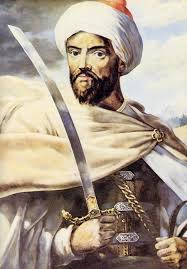They’re back: the annual Ig Nobel Prizes were announced on the 17th of September, celebrating bizarre and amazing science from 2015. I wrote a post a while ago with some of my favourite winners, but it’s so great that worth bringing attention to it every year.
So what incredible discoveries were worthy of an Ig Nobel Prize in 2015? I’ve included a selection here, but be sure to read about them all.
Chemistry Prize
Callum Ormonde and Colin Raston, and Tom Yuan, Stephan Kudlacek, Sameeran Kunche, Joshua N. Smith, William A. Brown, Kaitlin Pugliese, Tivoli Olsen, Mariam Iftikhar, Gregory Weiss, for inventing a chemical recipe to partially un-boil an egg.
Excellent! If you’ve ever accidentally boiled an egg, and wanted to undo your terrible mistake, science is well on its way to solving your problem.
Although the thought of scientists sitting in a lab desperately trying to unboil an egg sounds great, the discovery is actually about manipulating proteins in ways we haven’t been able to before. Colin Raston (an Australian scientist) invented the Vortex Fluidic Device to acheive this, and it will have uses in food processing and medicine.
The basic idea behind unboiling an egg (and how it related to more general protein questions) can be seen in this video from Ted Ed.
[youtube height=”480″ width=”853″]https://www.youtube.com/watch?v=CHMY4G9gTPA[/youtube]
Biology Prize
Bruno Grossi, Omar Larach, Mauricio Canals, Rodrigo A. Vásquez, José Iriarte-Díaz, for observing that when you attach a weighted stick to the rear end of a chicken, the chicken then walks in a manner similar to that in which dinosaurs are thought to have walked.
“Jurassic Park” can be credited with spreading the idea that dinosaurs were more closely related to modern birds than reptiles, at least among non-scientists. So it shouldn’t be a surprise that a lot of research into how dinosaurs might have moved would involve looking at birds.
Apparently over the millennia, the centre of mass of dinosaurs’ descendants (leading to birds) has been shifting forward. The idea that perhaps you could bring back a more “traditional” walking style by artificially shifting it (read: sticking heavier tail on a chicken) doesn’t seem too unreasonable… worth a shot anyway.
If you want to see the chicken with fake-tail in action (I know you do) the researchers included a video in their paper; look for ‘Video S1’ under ‘Materials and Methods’.
Physiology and Entomology Prize
Awarded jointly to two individuals: Justin Schmidt, for painstakingly creating the Schmidt Sting Pain Index, which rates the relative pain people feel when stung by various insects; and to Michael L. Smith, for carefully arranging for honey bees to sting him repeatedly on 25 different locations on his body, to learn which locations are the least painful (the skull, middle toe tip, and upper arm). and which are the most painful (the nostril, upper lip, and penis shaft).
That’s devotion to your work. Here is an image (within the full paper) indicating the places he endured a honey-bee sting: for science!
Literature Prize
Mark Dingemanse, Francisco Torreira, and Nick J. Enfield, for discovering that the word “huh?” (or its equivalent) seems to exist in every human language — and for not being quite sure why.
So now we know at the very least that you’ll be able to communicate “I don’t understand what you just said” to anyone in the world. Their paper includes a table of “what?” and “huh?” in various languages which highlights the difference in the former, and similarities in the latter.
Mathematics Prize
Elisabeth Oberzaucher and Karl Grammer, for trying to use mathematical techniques to determine whether and how Moulay Ismael the Bloodthirsty, the Sharifian Emperor of Morocco, managed, during the years from 1697 through 1727, to father 888 children.
 It’s hard to imagine what motivates a person to have so many children. Even if the 888 number is 10 times higher than reality, it would still be difficult to comprehend.
It’s hard to imagine what motivates a person to have so many children. Even if the 888 number is 10 times higher than reality, it would still be difficult to comprehend.
The researches used a report by a French Diplomat from 1704 as their source of information. Apparently the Emperor had four wives and a harem of 500 other women. Daughters he sired through women in his harem were not allowed to live, so they calculated that he had 1171 children over 32 years.
Taking physiological and cultural effects into account, and using a variety of different models of fertility, they calculated between 0.8 and 1.6 copulations per day would be needed to sire 1171 children. They also looked at the size of his harem, and determined that it was much bigger than it needed to be. On the most conservative model, additional women in the harem beyond 110 doesn’t increase the number of possible offspring.
The featured image above is made from two photos. Egg Emoticons is by Kate Ter Haar, and Headed my Way (the bee) is by Jerry Kirkhart, both are borrowed and edited with thanks under a Creative Commons licence.
The image of Moulay Ismael is in the Public Domain.